
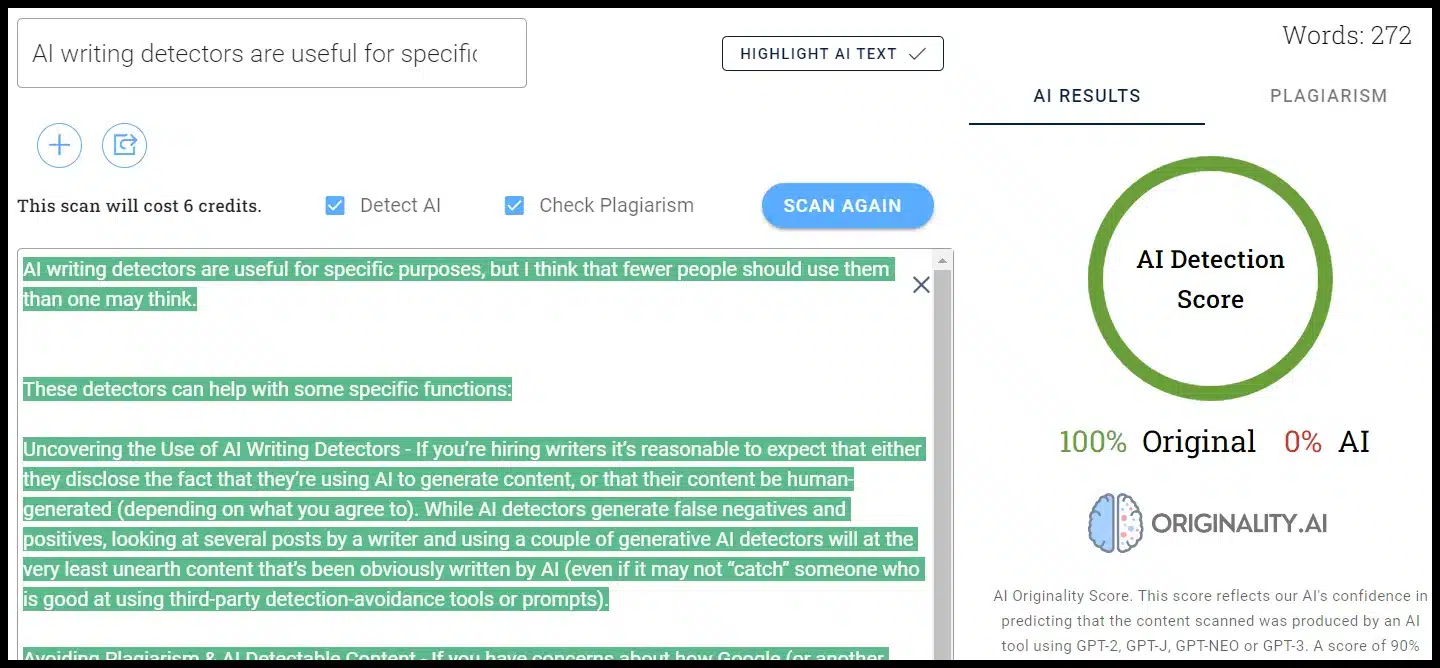
Originality.AI is a paid tool described as “the most accurate AI content detector and plagiarism checker built for serious content publishers.”
It costs $.01 per credit, which scans 100 words. It also features a plagiarism scanner alongside the AI scanner.
As you can see from the chart above, this is the only AI scanner with 100% confidence that the human content was human and that the AI content was AI (while also being correct in all cases).
Hive Moderation (discussed later in the article) essentially had the same conclusion with a 0% AI score for the human content and 99.9% confidence the two AI-generated texts were AI.
On top of having a Chrome extension and an overall score, Originality.AI added a feature highlighting the specific sections of the content you paste that it predicts will and won’t be AI.
I use this tool most frequently to check for AI content personally. My most frequent use-case is checking content submitted by freelance writers we work with for AI and plagiarism.
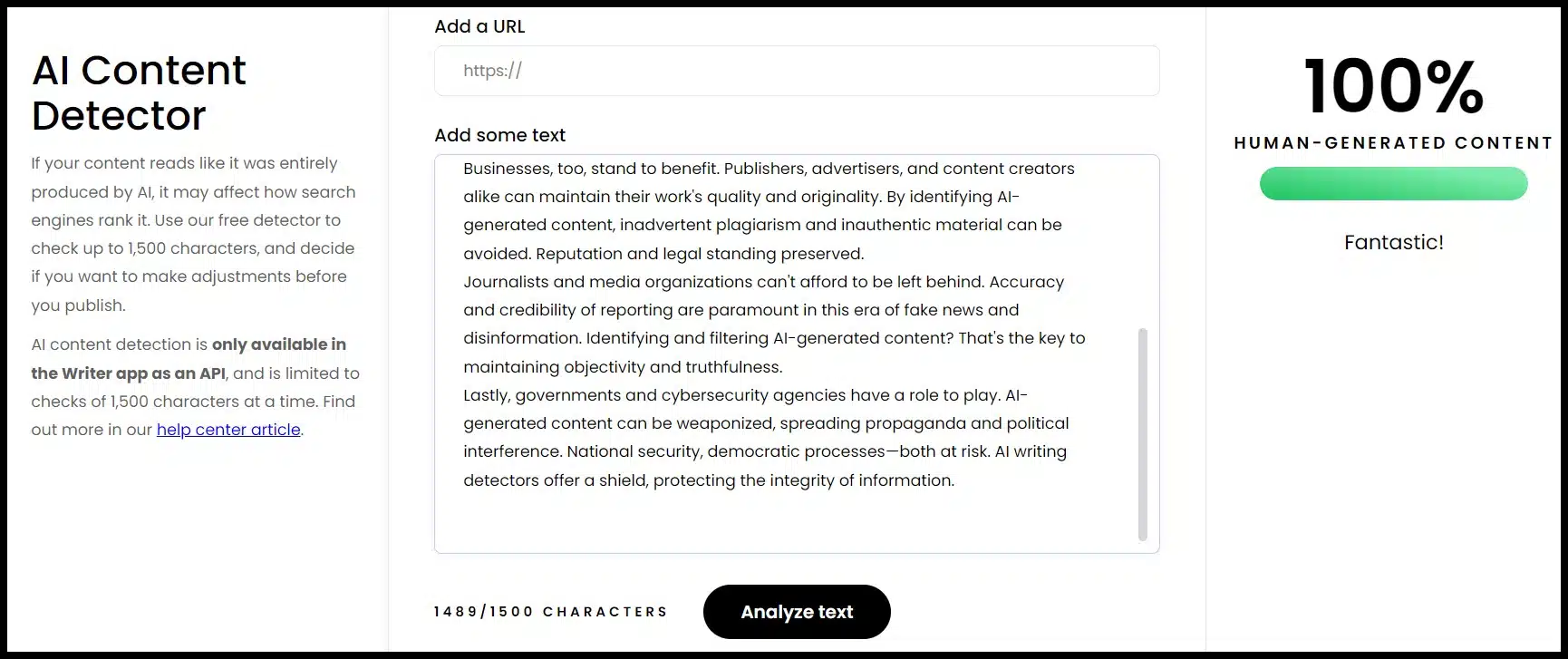
Writer offers a free detector that works on up to 1,500 characters and requires API access for more.
This tool essentially thought all of the submissions were relatively likely to be human-generated.
Writer is an AI writing platform, and the free content detector also allows you to input a URL to check.
There is no plagiarism feature within this tool directly, and it gives you an overall score but doesn’t mark specific sections as likely or unlikely to be AI-generated.

The Copyleaks AI Content Detector has a few interesting features:
The tool is free, and while a single scan doesn't do both, there's also a plagiarism detector.
It accurately identified much of the human-generated content as human and much of the AI-generated content as AI. However, it wasn't always confident and was incorrect in some individual sections.
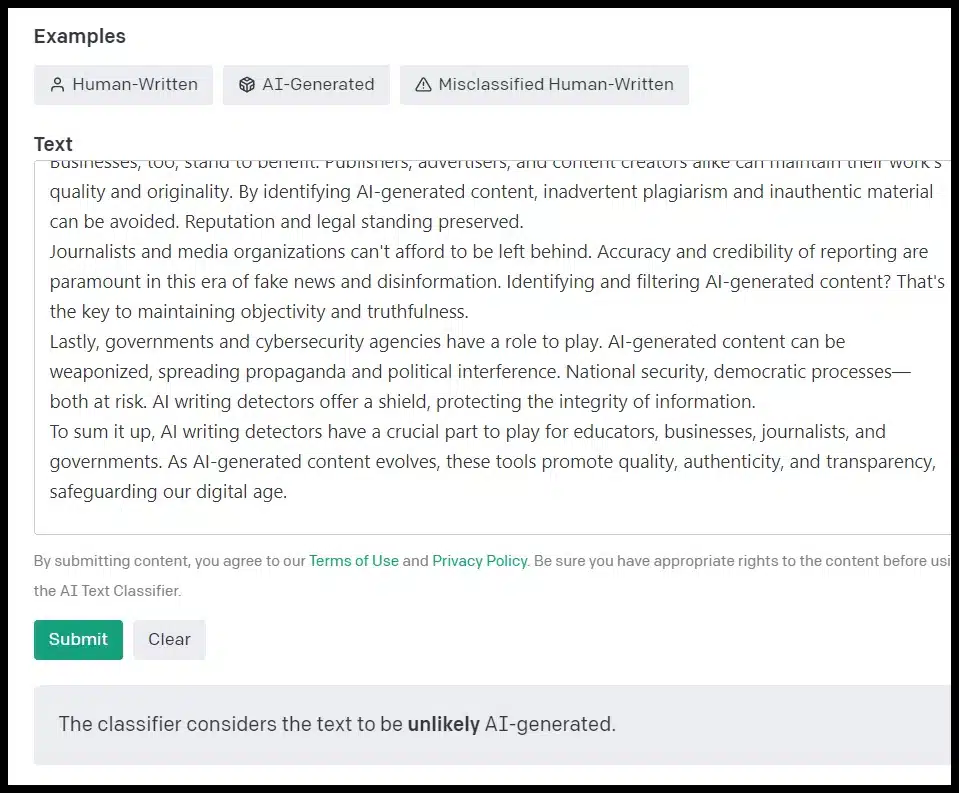
AI Text Classifier is a free tool from OpenAI, the company that created GPT (which is what runs many generative AI tools) and ChatGPT.
If you thought the company that makes the most popular AI tools would have the most accurate detector, that didn't ring true for our test.
The tool identified the human content as “very unlikely” to be AI-generated but identified the content from OpenAI’s own platform as “unclear” if it was AI-generated and “unlikely” AI-generated with and without the additional prompt.
The tool is free (you need an OpenAI account). There aren't a lot of bells and whistles and no plagiarism check.
You get a finding (like what you see in the screenshot) but no precise score. It also won’t highlight specific sections of copy for their individual likelihood of being AI-generated or not.
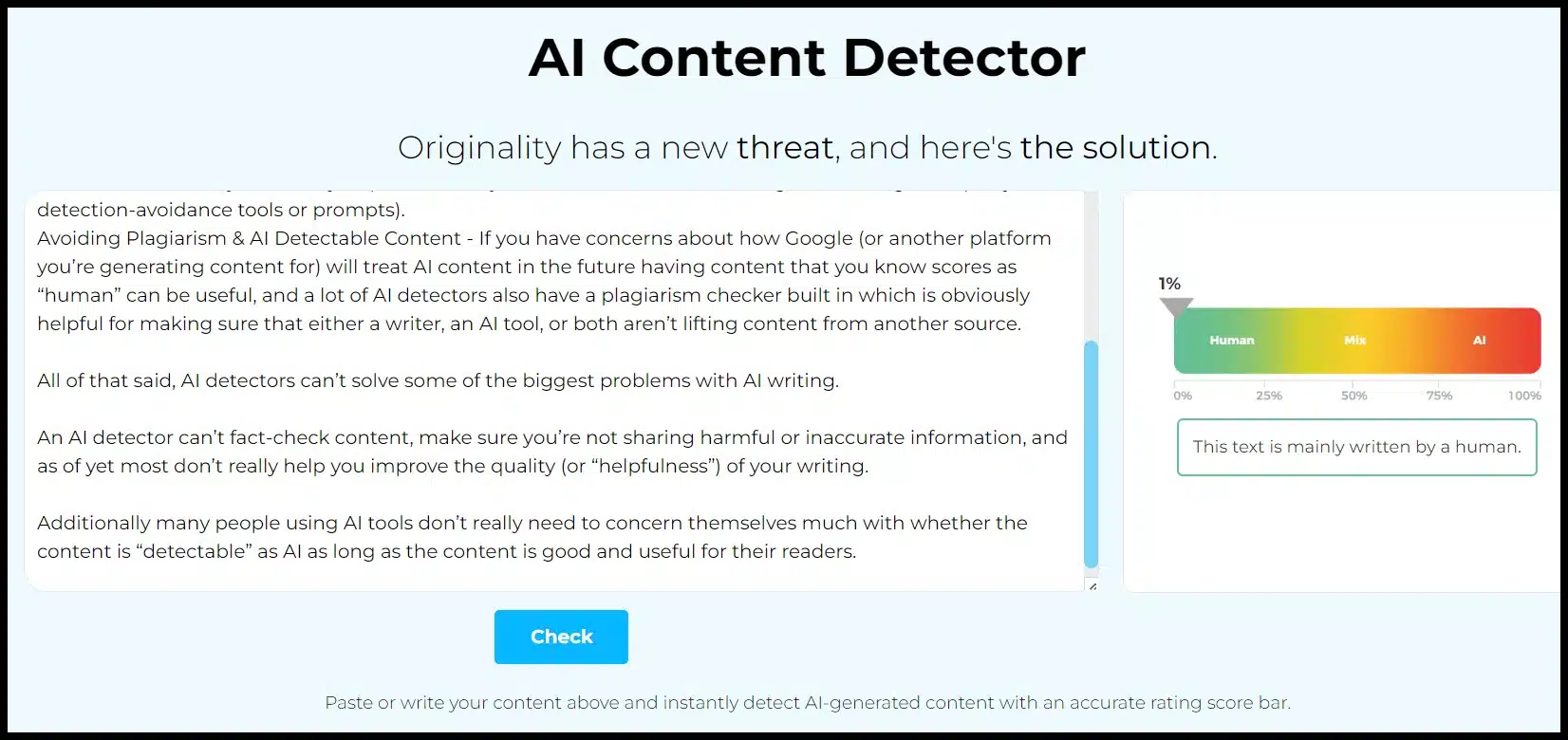
Crossplag offers a few free scans without an account. When logged in, you'll get unlimited free scans. The tool does give an overall score but doesn't offer the ability to check for plagiarism or mark up individual sections of the content.
Crossplaq identified the human and AI content as 99% human. It is worth noting that the tool repeatedly calls out that it performs better on longer text.
Our samples here were above their 200-character minimum recommendation but on the shorter side.

GPTZero has free and paid versions. The free version gives you a score and has some pre-loaded examples.
The paid version also offers a plagiarism checker, highlighting AI content, and the ability to bulk upload multiple pieces of content (which is actually designed for a classroom environment, like many of these tools).
Pricing for the paid tools isn't listed on the website, but you can fill out forms to request access to the paid tool and the API.
The free version of the tool identified all three of our writing samples as likely entirely human.
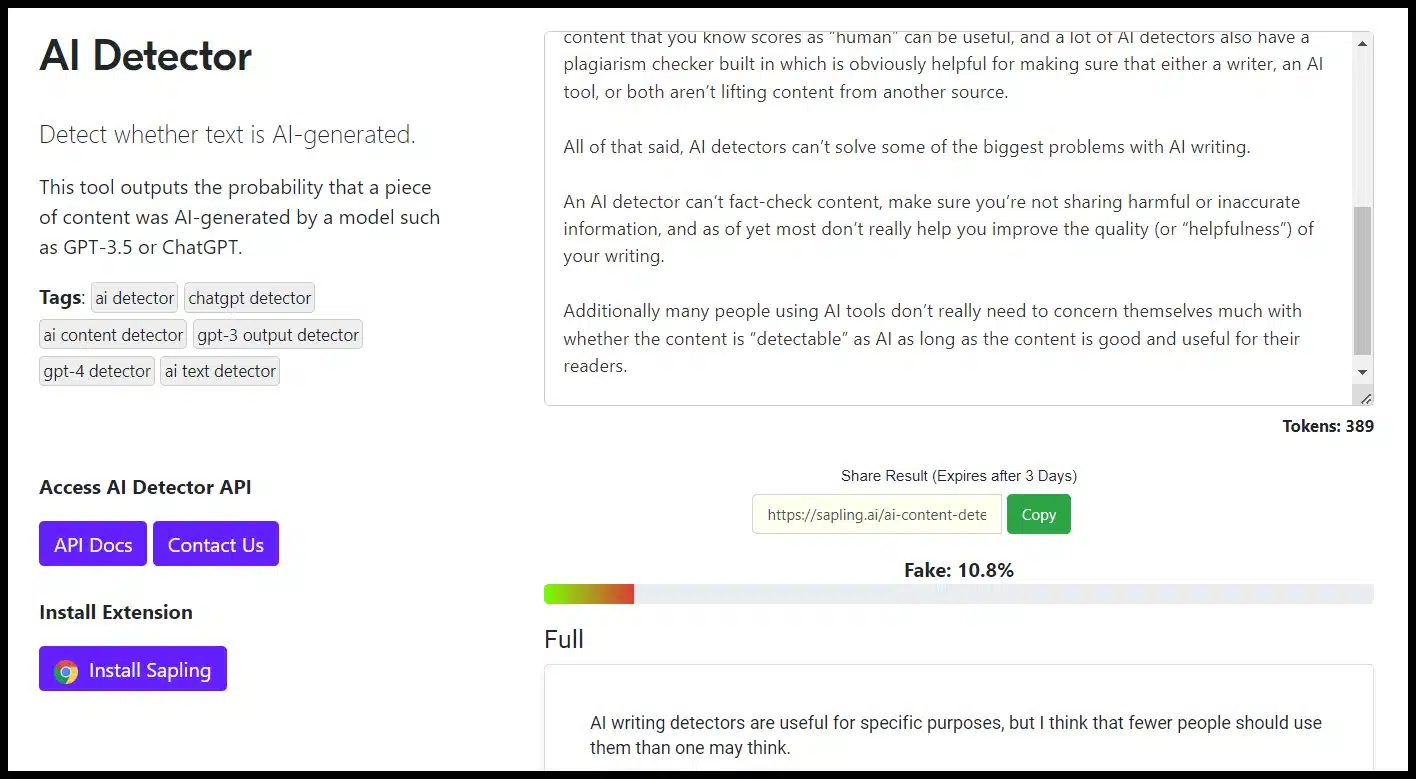
Sapling AI Detector offers free and paid versions, a Chrome Extension, an API, an overall score and sentence highlighting.
Sapling identified the human content as mostly human and the AI content as almost entirely AI. However, it identified the “perplex” and “bursty” ChatGPT content as highly likely to be human.
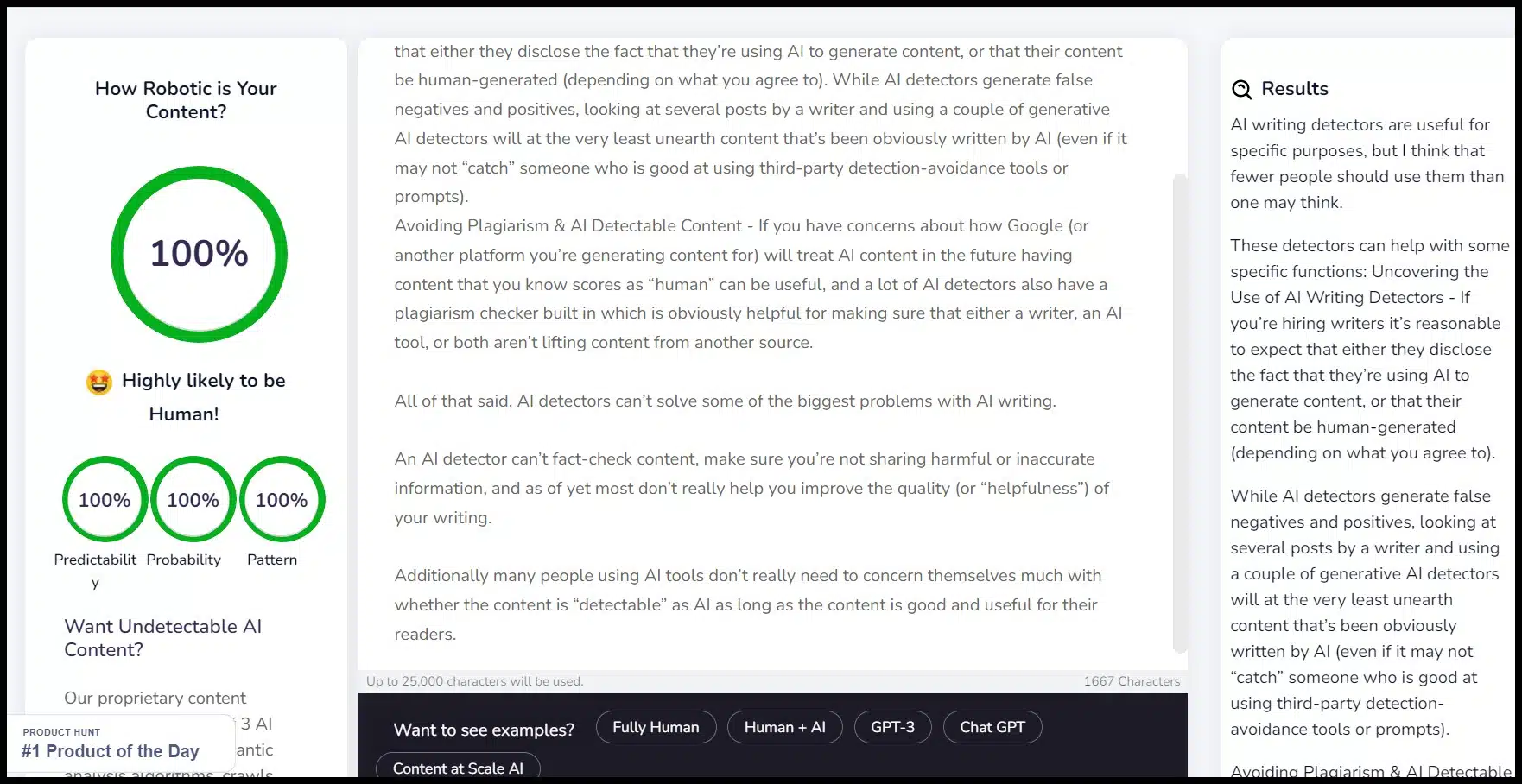
The Content at Scale AI Detector is free and offers a score with a breakdown of different elements within the content (predictability, probability, and pattern) and pre-populated examples.
No plagiarism detection option exists, and individual content sections aren’t highlighted.
Content at Scale rated all three samples as 92% human or higher.
The human did have the highest human percentage, followed by the prompt-modified GPT content and the content generated by the simplest prompt.

ZeroGPT is a free tool that offers an overall score and highlighting but no plagiarism detection.
The tool returned low percentages of AI-generated likelihood across the board. It roughly corresponded to the human-ness of the samples, with the human-generated sample getting the lowest AI percentage, followed by the burstiness / perplexity prompt, and then by the simpler prompt).
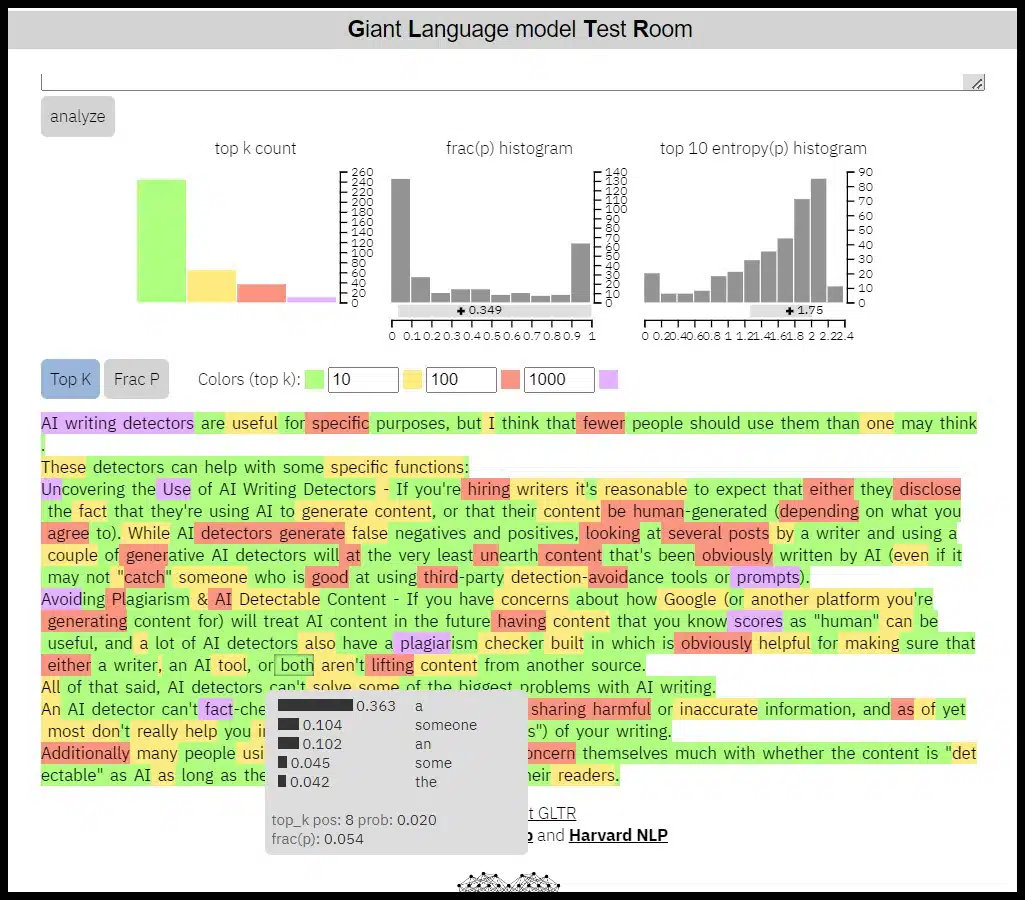
GLTR, or the “Giant Language model Test Room,” is a free tool that was a collaborative effort between Hendrik Strobelt, Sebastian Gehrmann, and Alexander Rush from the MIT-IBM Watson AI lab and Harvard NLP.
The tool offers some overall scoring but mainly shows whether each word within a text was one of the 10, 100, 1,000 or outside the 1,000 most likely words to be generated by AI based on the prior context in the text. There is no plagiarism feature set here.
The tool returned the highest number of “likely words” and particularly likely words in the top 10 for the text generated by the simpler prompt.
Still, the distribution was similar for the human and additional prompt copy in this small test.
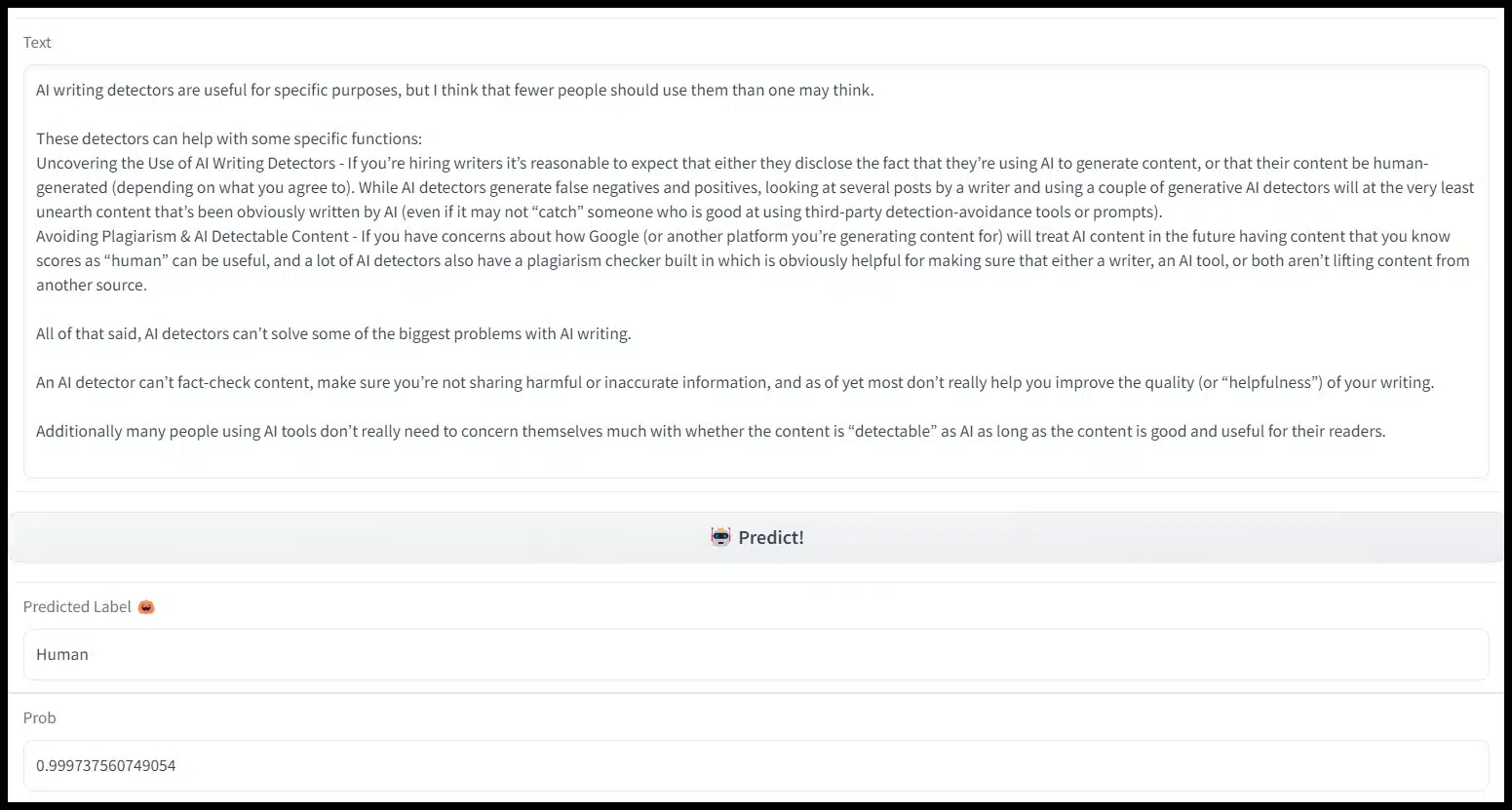
This is a free detector that gives an overall prediction and score. It doesn’t have any plagiarism or highlighting features.
This tool generated over 99.9% likelihood of human content for all three samples.

Corrector AI Detector is a free tool with a 600-word count limit and a percentage score. There is no plagiarism or highlighting features for the tool.
The tool labeled each of the samples with a very low percentage probability of being “fake” or AI.

The Writefull GPT Detector is a free tool with a simple score and API access. There is no highlighting and no plagiarism detection.
It found all three samples as likely human but did have the ChatGPT content with the simplest prompt with the highest AI likelihood (19%).
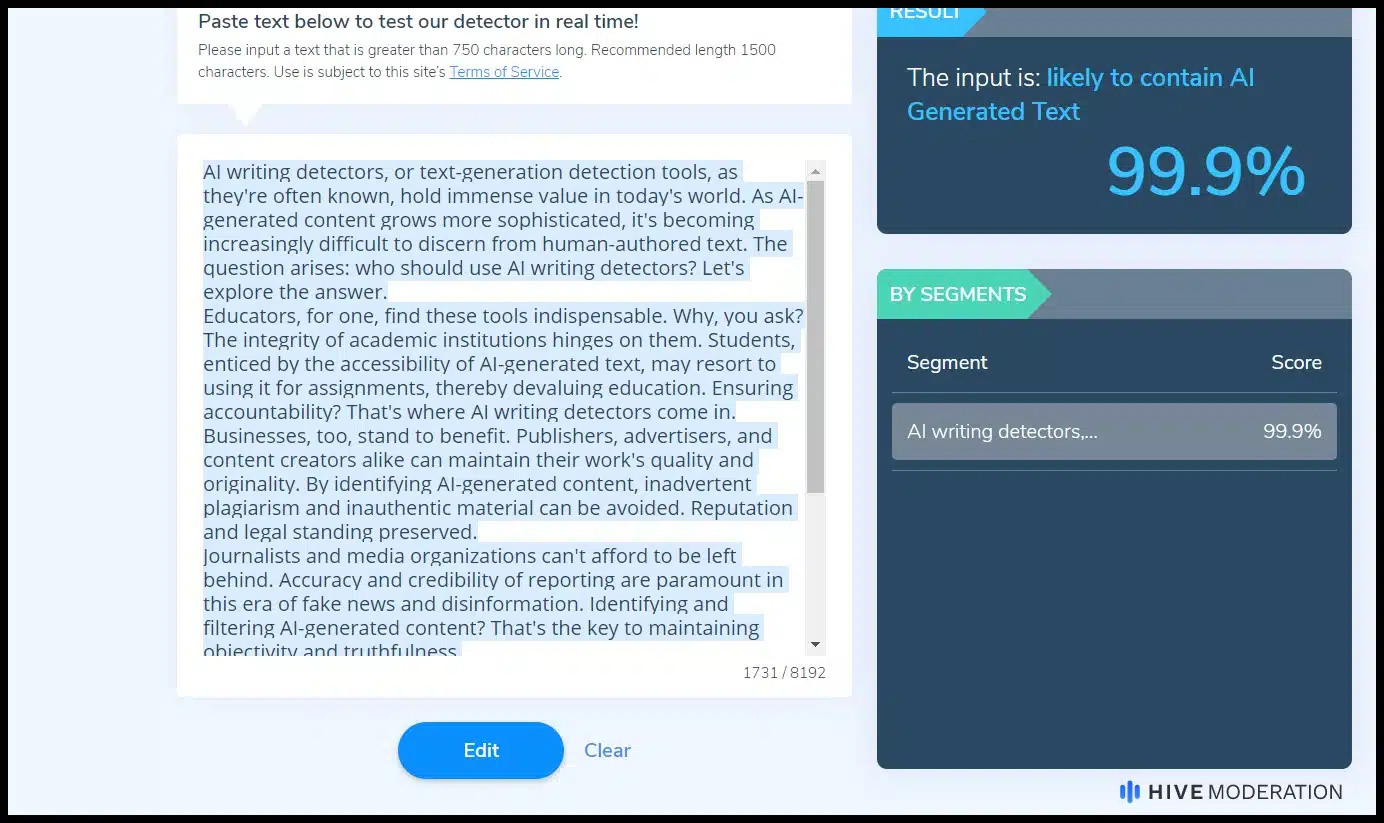
The Hive Moderation AI-Generated Content Detection tool is free (with character limits and requiring sign-in after several uses).
It doesn't offer plagiarism or highlighting but does allow you to break content out by sections and get segment-specific scores.
Hive essentially scored each writing sample properly, with a 0% likelihood of being AI for the human content and 99.9% scores for the AI samples.
(Only Originality.AI had a similar confidence level while being accurate across the samples.)

The paraphrasing tool is a re-writer, and they offer this free AI content detector with an overall conclusion and highlighting and no plagiarism features.
The Paraphrasing Tool concluded that each of the text was likely human.

AI Writing Check is a free tool that offers a score, has a word maximum, and does not feature text highlighting for AI probability or plagiarism features.
AI Writing Check identified all three writing samples as human.
Again, it’s essential to caveat my key findings here because three short writing samples are very small samples to draw steadfast conclusions about the individual tools.
That said, I found a few interesting patterns related to AI writing detectors in general: